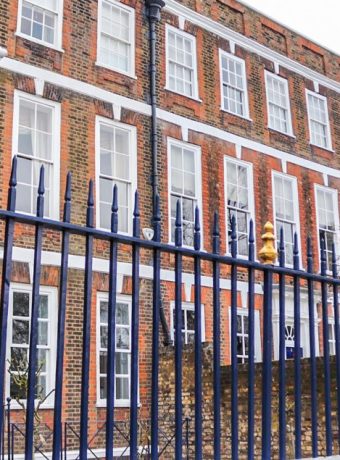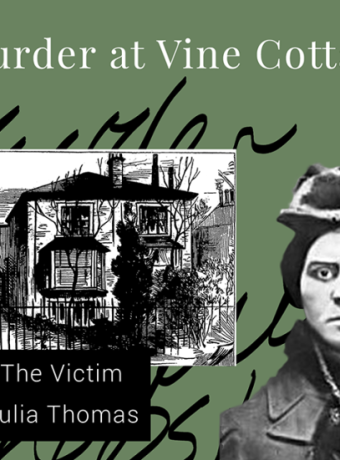Daniela Jacques History, Landmarks Hill Street, John Whittaker Ellis, Richmond Town Hall 0
The Castle Inn, Richmond: The Forgotten Heart of Hill Street
Today, few associate Richmond with a “Castle Inn”—but in its 18th and 19th-century heyday, it was the place to stay, dine, dance, and make history. What began as a stylish coaching inn on George Street grew into one of the area’s most fashionable hotels and event venues—only to vanish quietly, leaving behind just a few architectural whispers and a riverside road that still bears its legacy.
From George Street Origins to Hill Street Grandeur
The original Castle Inn was located on George Street and is notable for its striking Jacobean gables. One of these still survives today at No. 37 George Street, dating back to the late 17th century—a rare architectural survivor from Richmond’s pre-Georgian past.
In around 1760, the inn’s enterprising first owner, John Halford, relocated the business to a grander site on Hill Street. The new premises—a former riverside mansion—boasted sweeping gardens that stretched all the way to the Thames and its boathouses. It was, quite literally, the high life on Hill Street.
Ellis Ambition and Royal Celebrations
By the 1830s, the Castle Inn had found a new steward in Joseph Ellis, already the proprietor of the prestigious Star and Garter Hotel atop Richmond Hill. With a keen eye for luxury and location, Ellis transformed the Castle into a leading social hub.
Its assembly rooms became the scene of lavish balls, banquets and diplomatic soirées. One standout occasion was the 1838 coronation fête for Queen Victoria, hosted by none other than the Austrian Ambassador. For decades, the Castle Inn thrived as a glittering fixture on the social calendar.
The Curtain Falls—But Not Completely
The hotel’s fortunes faded in the 1870s. The main building finally closed its doors in 1878, though the assembly rooms—renamed Castle Rooms—remained in sporadic use into the early 20th century. A postcard from the 1930s even shows the name lingering in public memory.
As Richmond outgrew its existing council meeting space on Paradise Road, attention turned to the former Castle site for potential new civic offices. The town vestry considered purchasing it—but deemed it too expensive.
Enter John Whittaker Ellis, former Lord Mayor of London and son of Joseph Ellis. Though his family no longer owned the Castle Hotel property, Ellis purchased the site as a gift to the town, enabling the construction of a new Town Hall and civic complex.
A New Chapter: Whittaker Avenue and the Town Hall
The new Richmond Town Hall officially opened in 1888, on land once occupied by the Castle Inn’s grounds. Included in the gift was a condition that a new road be created to allow greater public access to the riverside. Originally named Castle Road, it was later renamed Whittaker Avenue, in honour of the man who made it possible.
In 1890, Richmond received its charter of incorporation, becoming a borough in its own right. Naturally, the first mayor was John Whittaker Ellis. His marble bust still watches over the Town Hall’s grand interior, unveiled in 1895 by the Princess of Teck.
Ellis died in 1912 and was buried in St Peter’s Churchyard, Petersham—but his influence on Richmond’s civic and architectural heritage endures to this day.
Did You Know?
- The Castle Inn once stood proudly on Hill Street, hosting balls, royal fêtes & society events in the 18th and 19th centuries.
- Its assembly rooms were so renowned that the Austrian Ambassador threw a coronation fête for Queen Victoria there in 1838.
- Joseph Ellis, also of the Star and Garter, transformed the Castle into a high-society hotspot.
- In 1888, the site became the new Richmond Town Hall, thanks to a gift from John Whittaker Ellis, Joseph’s son and Richmond’s first mayor.



